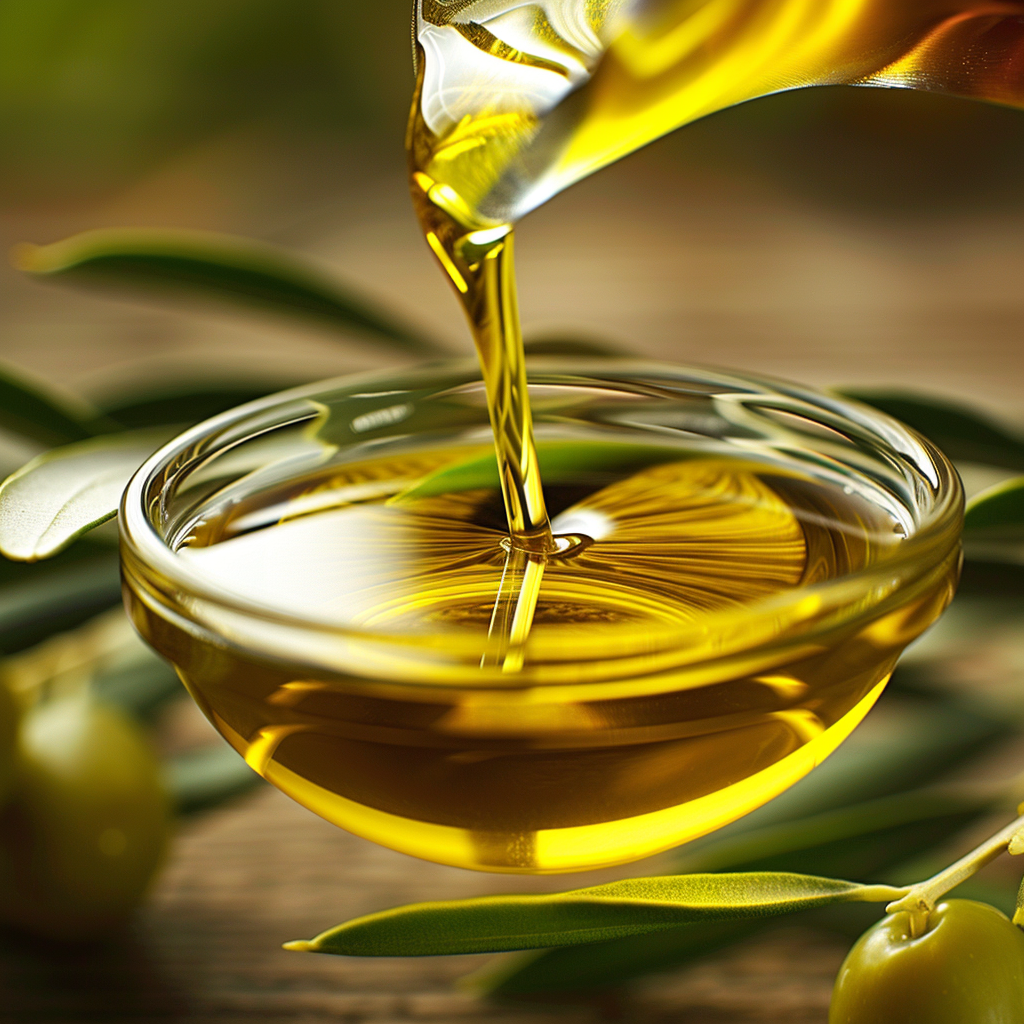Olive oil is one of the most common and valuable oils in the world, due to its unique taste and beneficial properties. However, with the growing demand for this product, cases of counterfeiting have also increased. Counterfeit olive oil not only can deceive consumers, but also poses a health hazard as it often contains unscrupulous ingredients. Because of this, it is important to have knowledge of how to identify the authenticity of olive oil and identify its key characteristics.
Genuine Olive Oil: Key Features
Olive oil, produced from the fruit of the olive tree (Olea europaea), has a number of unique characteristics that distinguish it from other oils and determine its quality.
a) Origin and production methods:
- Genuine olive oil is produced exclusively by cold pressing the olive fruit or mechanical methods, which preserves its natural properties.
- It is produced in regions where the olive culture is traditional and has high quality standards.
b) Chemical composition:
- Genuine olive oil is rich in monounsaturated fatty acids, such as oleic acid, which are key to its beneficial properties.
- It also contains vitamins E and K, antioxidants and phenols, giving it a unique taste and aroma.
c) Organoleptic characteristics:
- Genuine olive oil has a fresh and fruity aroma, with hints of herbs and nuts.
- Its taste has a slight bitterness and pleasant pungency, with notes of green fruits and herbs.
d) Marking and certification:
- High-quality olive oil is often labeled accordingly, indicating its origin, production method and fatty acid content.
- It may also be certified to confirm its authenticity and compliance with quality standards.
Understanding these key characteristics of genuine olive oil is an important step in preventing product counterfeiting and ensuring a high quality product for consumers.
Methods for determining the authenticity of olive oil
Determining the authenticity of olive oil can be carried out by various methods, including organoleptic evaluations, chemical analyzes and the use of specialized technologies and tests.
a) Organoleptic methods:
- These methods involve evaluating the appearance, aroma and taste of the oil to determine its authenticity.
- The sensory evaluation is carried out by experienced specialists who are trained to recognize the characteristic characteristics of genuine olive oil, such as fruity aroma and slight bitterness.
b) Chemical analyses:
- Chemical analysis methods may include determination of fatty acid content, phenolic content, and testing for impurities in other oils.
- Gas chromatography and spectroscopy are common chemical analysis techniques used to determine the chemical composition and condition of an oil.
c) Use of technologies and tests:
- Modern technologies such as mass spectrometry and nuclear magnetic resonance (NMR) analysis allow for more accurate and objective assessments of oil authenticity.
- There are also specialized test kits and instruments designed to quickly assess the authenticity of olive oil at home.
Signs of counterfeit olive oil
Counterfeiting of olive oil can occur in a variety of ways, and there are certain signs that can help identify a counterfeit product.
a) Adding other oils or refined products:
- Fake olive oil often contains contaminants from other oils, such as sunflower or soybean oil, as well as refined products, reducing its quality and value.
b) Fake markings and labels:
- Fraudsters may create fake labels and markings that imitate well-known olive oil brands to deceive consumers.
- Labels on counterfeit oils may contain misspellings, lack of required certifications, or questionable claims about the origin of the product.
c) Methods used by scammers to disguise counterfeit products:
- Fraudsters may use a variety of methods to disguise counterfeit products, including changing the color of the oil or adding aromatics to give the counterfeit product the characteristics of genuine olive oil.
Learning to recognize these signs and use the appropriate methods to determine authenticity helps you protect yourself from purchasing counterfeit olive oil and ensure you receive a high-quality product.
Checking the label and markings
Checking the label and markings is one of the first steps in determining the authenticity of an olive oil. When choosing a product, you should pay attention to the following aspects of the label:
- Checking that you have accurate information about the origin of the oil, including the country of origin or the region where the olives were grown.
- Make sure the label states how the oil was produced, such as “cold pressed” or “mechanical,” to indicate the quality of the product.
- Check for certifications such as the “Extra Virgin” label, which certifies the oil’s superior quality.
- Be alert for possible errors or inconsistencies on the label, such as typos, changed fonts, or missing important information.
Carrying out organoleptic tests
Organoleptic tests are based on visual and sensory analysis of the oil to evaluate its characteristics and authenticity. Here are a few steps you can take to conduct a sensory test:
- Assessing Oil Color: Genuine olive oil usually has a greenish tint or yellowish color, depending on the variety of olives and their degree of ripeness.
- Aroma Analysis: Real olive oil has a fresh and fruity aroma, with notes of herbs and nuts.
- Taste assessment: A genuine oil should have a slight bitterness and pleasant pungency, with hints of green fruits and herbs.
- Carrying out the “Spoon Test”: Real olive oil, when cooled, leaves a slight trace of an oily coating on the surface.
Carrying out sensory tests requires some knowledge and experience, but can be a useful tool to determine the authenticity of olive oil before purchasing it.
Determining the authenticity of olive oil is a key aspect of ensuring its quality and safety for consumers. In this article, we examined the main characteristics of genuine olive oil, methods for its determination, as well as signs indicating a possible counterfeit of the product. Checking the label and markings, conducting sensory tests and using specialized methods to analyze the chemical composition of the oil are important steps to protect consumers from purchasing a counterfeit product. Understanding and applying these techniques helps ensure that high quality and authentic olive oil is obtained while maintaining its beneficial properties and taste.
To determine the authenticity of olive oil, organoleptic methods, chemical analyzes and specialized technologies such as gas chromatography and mass spectrometry are used.
Counterfeit olive oil may contain contaminants from other oils, be labeled or labeled falsely, or have altered organoleptic characteristics such as color, aroma, and taste.

